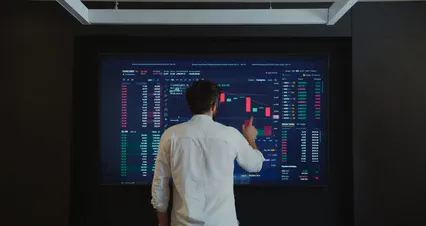Introduction
Statistical arbitrage is the superhero of quantitative finance. It swoops in to exploit fleeting market inefficiencies using mathematical models. Picture two stocks that are like old friends, usually moving in tandem. When one strays, statistical arbitrage whispers, “Time to take advantage!” This strategy is crucial for hedge funds, prop trading firms, and even retail traders looking to make a quick buck.
This article aims to shine a light on a specific treasure trove: the Kaggle dataset dedicated to statistical arbitrage. We’ll navigate through its features, benefits, and how you can harness it for various trading strategies.
The rise of platforms like Kaggle has been nothing short of remarkable. They’ve democratized access to data, enabling budding quants and seasoned traders alike to refine their strategies. With a wealth of datasets at their fingertips, users can test hypotheses, backtest strategies, and ultimately improve their trading acumen. So, grab your virtual surfboard as we ride the data wave!
If you want to dive deeper into the world of quantitative finance, consider picking up “Statistical Arbitrage: How to Take Advantage of Market Inefficiencies” by David Shaw. This book is a fantastic resource for anyone looking to understand the nuances of this trading strategy.

Understanding Statistical Arbitrage
What Is Statistical Arbitrage?
Statistical arbitrage, often referred to as StatArb, is a quantitative trading strategy that capitalizes on statistical mispricings between securities. At its core, it operates on the principle of mean reversion. When two correlated assets deviate from their historical price relationship, the strategy predicts that they will revert to their historical mean.
Pairs trading is a popular strategy within the statistical arbitrage umbrella. Imagine two stocks, let’s say Coca-Cola and Pepsi. When Coke’s price spikes while Pepsi remains stable, StatArb traders will short Coke and go long on Pepsi, expecting their prices to realign. If all goes according to plan, profits flow in like a fizzy soda!
Historical Context and Its Evolution
The story of statistical arbitrage began in the 1980s, when pioneers at Morgan Stanley, led by Nunzio Tartaglia, began crafting statistical methods to identify correlated pairs of securities. These early quants were like the original dream team of finance, laying the groundwork for a strategy that would evolve dramatically.
David Shaw, a notable figure from this group, would later found D.E. Shaw Group, a hedge fund known for its sophisticated quantitative approaches. The strategy gained traction and became a staple for many hedge funds, transforming how traders approached market inefficiencies.
With advancements in technology and access to massive datasets, statistical arbitrage has evolved. Today, traders leverage machine learning and data analytics to refine their strategies further, making this once niche approach a mainstream powerhouse in the trading world. If you’re interested in machine learning, check out “Machine Learning for Asset Managers” by Marcos López de Prado for valuable insights.

Stay tuned as we dive deeper into the Kaggle dataset that can enhance your statistical arbitrage game!
The Kaggle Dataset
Overview of the Statistical Arbitrage Kaggle Dataset
The Statistical Arbitrage Kaggle dataset is a goldmine for traders and researchers alike. This dataset is designed to support the analysis of market inefficiencies, specifically through statistical arbitrage strategies. It includes historical price data for a variety of stocks, alongside trading volumes, making it a fantastic resource for testing trading algorithms.
The dataset typically features time series data, including open, high, low, close prices, and volume data. Each entry represents daily data points, which allows for thorough analysis over extended periods. Some datasets also contain adjusted closing prices, accounting for dividends and stock splits, ensuring that your analysis reflects true market behavior.
What makes this dataset particularly valuable is its relevance to both quantitative finance and algorithmic trading. Traders can use it to identify pairs for pairs trading strategies based on historical correlations. By analyzing these price movements, they can develop and backtest their trading strategies effectively. Researchers benefit too, as they can explore the underlying principles of statistical arbitrage and refine their academic studies using real-world data.

The dataset encourages users to harness sophisticated statistical techniques. For instance, traders often employ methods like cointegration analysis and mean reversion strategies. The ability to analyze price relationships over time can lead to exciting findings and profitable trading opportunities. It’s like having a treasure map in the vast ocean of the stock market!
If you’re looking to strengthen your data analysis skills, consider reading “Python for Data Analysis” by Wes McKinney. It’s a great resource for mastering data manipulation and analysis.
How to Access and Use the Dataset
Accessing the Statistical Arbitrage dataset on Kaggle is a breeze. Follow these steps to get started:
1. Create a Kaggle Account: If you haven’t already, sign up for a free account on Kaggle. This opens up a world of datasets and competitions.
2. Search for the Dataset: Use the search bar at the top of the Kaggle homepage. Type “Statistical Arbitrage” to find relevant datasets.
3. Select Your Dataset: Browse through the search results and click on the dataset that meets your needs. Ensure to check the description and the files included.
4. Download the Dataset: Once you are on the dataset page, look for the “Download” button. Clicking it will download a zip file containing the data in CSV format, ready for analysis.
5. Import the Dataset into Your Analysis Software: After downloading, you can easily import the dataset into your preferred analysis software. For Python users, libraries like Pandas and NumPy are your best friends. Here’s a quick snippet to get you started:
import pandas as pd
# Load the dataset
data = pd.read_csv('path_to_your_downloaded_file.csv')6. Tip for R Users: If you prefer R, importing is just as simple. Use the following code snippet:
data <- read.csv("path_to_your_downloaded_file.csv")With these steps, you’ll be ready to analyze the dataset and uncover potential trading strategies. Remember, the key to successful statistical arbitrage lies in thorough analysis and understanding of the underlying data. So roll up your sleeves and get to work!

Data Exploration
Before diving headfirst into the statistical arbitrage pool, it’s crucial to conduct a thorough data exploration. Think of this step as checking the water temperature before jumping in—nobody wants a nasty surprise!
Start by inspecting the dataset for missing values. Missing data can be as sneaky as a cat at a dog show—often overlooked but potentially disruptive. Use functions like isnull() in Python’s Pandas library to identify where the gaps lurk. Fill in these gaps with appropriate methods, such as interpolation or using the mean, to ensure your analysis remains robust.
Next, keep an eye out for outliers. These little misfits can skew your results faster than a raccoon in a trash can. Visualize your data using box plots to spot these anomalies. A box plot will clearly show you how values spread and highlight any outliers that could be mischief-makers in your analysis.
Finally, run some basic statistics on your dataset. Calculate the mean, median, and standard deviation for key columns. This will give you a clearer picture of the dataset’s overall behavior. Histograms can be particularly useful here. They’ll help you visualize the frequency distribution of your data. Are most values clustered around a certain point? Or are they scattered like confetti at a parade? Understanding this will guide your feature engineering decisions.

Feature Engineering
Once you’ve explored the data, it’s time to roll up your sleeves and engage in feature engineering. This crucial step transforms raw data into meaningful features that can enhance your statistical arbitrage strategies. Think of it as turning ordinary ingredients into a gourmet dish—presentation matters!
Feature engineering is vital because it identifies patterns and relationships that raw data often hides. A classic example is moving averages. By calculating short-term and long-term moving averages, you can detect trends and make informed trading decisions. For instance, a simple 50-day moving average can help smooth out price fluctuations and signal potential buy or sell opportunities.
Another useful feature is volatility measures. By assessing the standard deviation of returns over a specified period, you can gauge market risk. High volatility might indicate turbulent waters ahead, while low volatility could signal a calmer market—ideal for entering trades.
You might also want to consider creating features based on price ratios or spreads between correlated stocks. This can be particularly useful in pairs trading, allowing you to measure the divergence from historical price relationships. If two stocks typically move together, any significant deviation could present an opportunity for profit.
In summary, feature engineering transforms your dataset into a powerful tool for making informed trading decisions. With the right features, you’ll be ready to tackle statistical arbitrage like a pro!
Backtesting the Strategy
Backtesting is the backbone of any trading strategy. It’s like trying on shoes before buying them. You want to ensure they fit comfortably and won’t pinch your toes during a long walk. In statistical arbitrage, backtesting helps traders evaluate how a strategy would have performed using historical data.
To implement backtesting using the Kaggle dataset, follow these steps:
1. Select Your Strategy: Define the statistical arbitrage strategy you want to test, such as pairs trading.
2. Gather Data: Import the Kaggle dataset into your analysis environment. This dataset provides the historical price data necessary for testing your strategy.
3. Simulate Trades: Program your strategy to simulate trades based on historical prices. Record entry and exit points as if you were trading in real time.
4. Analyze Results: After running your backtest, collect performance metrics to evaluate how well your strategy performed.

When it comes to performance metrics, a few key indicators stand out:
- Sharpe Ratio: This metric measures risk-adjusted return. A higher Sharpe ratio indicates that the strategy provides better returns relative to the risk taken. It’s like comparing apples to oranges—you’re looking for the juiciest fruit!
- Maximum Drawdown: This measures the largest drop from a peak to a trough in your portfolio value. If your drawdown is too large, it’s a red flag. You want to keep those dips manageable, like avoiding a roller coaster that drops too steeply!
- Win Ratio: This metric tracks the percentage of profitable trades against the total number of trades. A solid win ratio, above 50%, suggests your strategy may be on the right track.
Using these performance metrics, you can fine-tune your statistical arbitrage strategy until it shines brighter than a new penny! If you’re interested in a comprehensive guide to trading, consider checking out “Quantitative Trading: How to Build Your Own Algorithmic Trading Business” by Ernest P. Chan.

Challenges and Limitations
Statistical arbitrage sounds all fun and games until reality checks in. Several challenges can trip you up when implementing these strategies.
First, let’s talk about transaction costs. Every time you buy or sell, fees nibble at your profits. These costs can add up, especially in high-frequency trading strategies. If your strategy has tight margins, those fees can turn a profitable trade into a loss quicker than you can say “market inefficiency.”
Next up, we have market impact. Large trades can move the market, causing prices to shift in ways you didn’t anticipate. If you’re trading a small stock and you suddenly dump a heap of shares, good luck getting the price you expected!
Now, let’s consider the limitations of the Kaggle dataset itself. While it’s a fantastic resource, it may not encompass all market conditions or nuances. For instance, the dataset might lack data during significant market events, like financial crises or major economic shifts. This absence can skew your analysis and lead to strategies that won’t hold up in real-world trading.

Moreover, remember that historical performance does not guarantee future results. Just because a strategy worked well in the past doesn’t mean it will continue to do so. It’s essential to keep a curious mindset and continually adapt your strategies as market conditions change.
By being aware of these challenges and limitations, you can approach statistical arbitrage with a more realistic perspective. After all, a well-informed trader is a successful trader!
Event-Driven Statistical Arbitrage
Event-driven statistical arbitrage is like having a front-row seat to the market’s drama. It’s all about capitalizing on specific events that can cause price movements, while also executing traditional arbitrage strategies. Think of it as being in a stock market version of a soap opera—always watching for the next plot twist!
Incorporating event-driven strategies alongside traditional approaches can enhance your trading prowess. The key is to identify events that could impact asset prices, such as earnings releases, economic reports, or geopolitical developments. Imagine a company announcing unexpectedly stellar earnings. If the market reacts quickly, you want to be ready to short the stocks that lag behind or go long on those that are likely to surge.

To make this work, it’s crucial to build trading models that integrate news and economic events. You can use natural language processing to analyze news sentiment. For instance, if the news is overwhelmingly positive about a tech company, your model should be able to adjust positions accordingly, predicting a price spike.
Moreover, economic indicators can serve as significant inputs into your statistical models. For example, if unemployment rates drop, consumer spending might increase, benefiting retail stocks. By weaving these insights into your trading algorithms, you can effectively anticipate market movements and execute trades that align with your predictions.
So, keep your eyes peeled! The market is full of surprises, and those who can read the tea leaves of news cycles and economic shifts will find themselves ahead of the game. In the meantime, consider investing in some noise-canceling headphones to help you focus during your trading sessions!

FAQs
What is statistical arbitrage, and how does it work?
Statistical arbitrage, or stat arb, refers to a quantitative trading strategy that seeks to exploit pricing inefficiencies between correlated securities. By identifying pairs of stocks that historically move together, traders can capitalize on temporary price divergences. When one stock deviates from its expected price relationship with its pair, traders will short the overperforming stock while going long on the underperforming one, banking on the assumption that prices will revert to their historic mean.
Where can I find the statistical arbitrage Kaggle dataset?
You can find the statistical arbitrage dataset by visiting the Kaggle platform. Simply search for “Statistical Arbitrage” in the dataset section, and you will find a variety of relevant datasets available for exploration. Here’s a direct link to get you started: [Kaggle Dataset](https://www.kaggle.com).
Can I apply machine learning to statistical arbitrage strategies?
Absolutely! Machine learning can significantly enhance statistical arbitrage strategies. By leveraging algorithms, traders can identify patterns in historical data, optimize trading signals, and even predict future price movements based on various input features. Common techniques include regression models, decision trees, and neural networks. These models can continuously learn from new data, improving their predictive accuracy over time.
What are the risks associated with statistical arbitrage?
While statistical arbitrage can be lucrative, it is not without risks. Market risk is a primary concern, as unforeseen events can disrupt the expected price convergence. Model risk also plays a role, as inaccuracies in the statistical models can lead to poor trading decisions. Additionally, transaction costs and liquidity issues can erode profits, particularly for high-frequency trading strategies. It’s essential to maintain a robust risk management strategy to navigate these challenges effectively.
How can I improve my statistical arbitrage strategies?
Improving your statistical arbitrage strategies involves several key practices. First, prioritize continuous learning about market conditions and emerging trends. Secondly, backtest your strategies rigorously using robust datasets to understand their historical performance. Finally, consider diversifying your dataset sources and incorporating alternative data, such as social media sentiment or economic indicators, to enhance your models. Regularly refine your approaches based on new insights and market developments, ensuring that your strategies remain relevant and effective.
For more insights on utilizing data effectively, check out these tips for effective data analysis in economics and statistics.
As you embark on your trading journey, consider investing in an adjustable standing desk to keep your workspace dynamic and comfortable!
Please let us know what you think about our content by leaving a comment down below!
Thank you for reading till here 🙂
All images from Pexels




